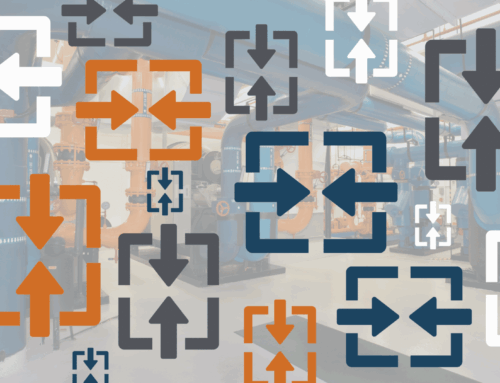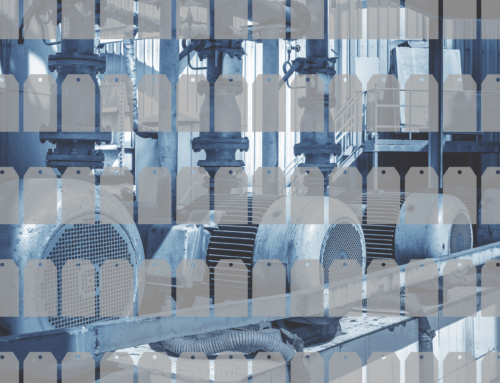It’s a new year and that means people across the world have set their 2023 resolutions. Regardless of how your resolutions went in 2022, January marks a fresh start! And if you haven’t made a resolution at work, consider creating some before January ends. Since you spend almost a quarter of the year at work, work resolutions make sense.
Not ready to leave 2022 behind yet, check out the US Department of Energy’s top accomplishments in 2022 for some motivation.
As an organization that focuses on helping plants transform their data into actionable insights, we of course recommend creating data resolutions. For the process industry, consider these data historian resolutions to improve your decision-making in 2023.
1. Be More Creative
The purpose of a data historian is to collect, archive, and display time-series sensor data. But you don’t have to limit yourself to data coming directly from the sensors. Use calculated tags to expand what and how you monitor your equipment. From an efficiency tag to a moving average tag, use calculated tags (also referred to as virtual tags) to expand your monitoring and analysis.
Want to know more, check out our past blog post on calculated tags | Calculated Tags: Improving Data Historians
2. Be More Organized
A data historian serves as an organization’s memory of past operations. It has no issues remembering long or non-descriptive tag names, but this is not the same for your people. Use this year as an opportunity to update your tag naming convention so you spend your time analyzing the data, not trying to identify the right tags.
Looking for more best practices, read our blog post on tag naming conventions | What’s in a Tag Name
3. Be More Focused
In any plant, there is a large number of sensors transmitting data to a data historian at a high resolution. This ocean of data has insight potential, but it doesn’t mean you need all the data all the time all at once. Create dashboards of key equipment and key performance indicators for you, your team, and the organization in general. This will help you stay focused and hopefully not miss an opportunity (or issue).
Interested in creating more dashboards, review our blog post on historian dashboards | Improved Equipment Monitoring with Dashboards
4. Be More Automated
Like any software tool, a data historian is meant to make your life easier—not more difficult. This year, review how you and your team integrate the solution into your day-to-day and how you can make it work more for you. One area ready for improved automation is reporting. By setting up templates with a pre-set run frequency, you can automatically run daily, weekly, and monthly reports to share.
Ready to improve your reporting, look at some of our tips for effective reporting | Tips to Improve Data Reporting
5. Be More Connected
A data historian serves as a foundational element of an organization’s data infrastructure. As a result, a data historian should connect to other systems to build out an organization’s ecosystem of solutions. A data historian should of course collect data from various sources. But this, also check to see where the data historian can send data for additional analysis and insights.
Wanting to upgrade your data historian, review the implementation process including third-party connections in our implementation blog post | Data Historian Implementation: What’s Next
6. Be More Active
Accessing and visualizing real-time and historical data through a historian provides necessary insights for operations. But what else can you do with the data? With advancements in artificial intelligence and machine learning, consider using your historian data for advanced predictive analytics. Through the integration of a data historian and predictive analytics solution, an organization has a more holistic view of where they’ve been, where they are, and where they are going.
Considering predictive analytics, learn more about selecting a solution in our blog post on predictive maintenance solutions | Advanced Pattern Recognition Software for Industrial Operations
7. Be More Economical
A data historian is a critical piece of technology for a plant, but that does not mean it has to come with expensive ongoing maintenance and support. Review how your current historian is or is not meeting your needs. And from there you can compare the value provided by the ongoing costs incurred. If there is a mismatch, look for ways to increase the value and reduce the ongoing costs—this may require making a solution vendor switch.
For a better understanding of the costs related to your data historian, look at our blog post on total cost of ownership | Predictive Analytics and Data Historian TCO
8. Be More Open
The purpose of collecting and archiving equipment data is not to lock it away. Instead, the purpose is to provide insights and improve operations. You can increase your chances of getting value from the data by giving more members access to the data. Review your current data security and user management procedures to ensure you’re providing the right data to the right people at the right time.
Planning to train more users this year, read our tips in our blog post on historian training | Historian Software Training: Got Software, Now What?
9. Be More Visual
At its core, a historian archives data in a number format. But data doesn’t have to just be letters and numbers. Data historians have progressed beyond collecting and historizing data and now provide built-in visualizations. Consider adding monitoring-only process graphics to help contextualize and visualize your equipment data for improved data ingestion.
Need some inspiration, check out the built-in visualization tools a data historian offers in our blog post | What Is a Data Historian?
10. Be More Agile
Just like the data historian from 10 years ago, the data historian in 10 years will not be the same as today. The ability to adapt and evolve is what we expect of our technology and solutions, including data historians. For 2023, reflect on how your data historian can grow with you and your team’s needs now and in the future.






